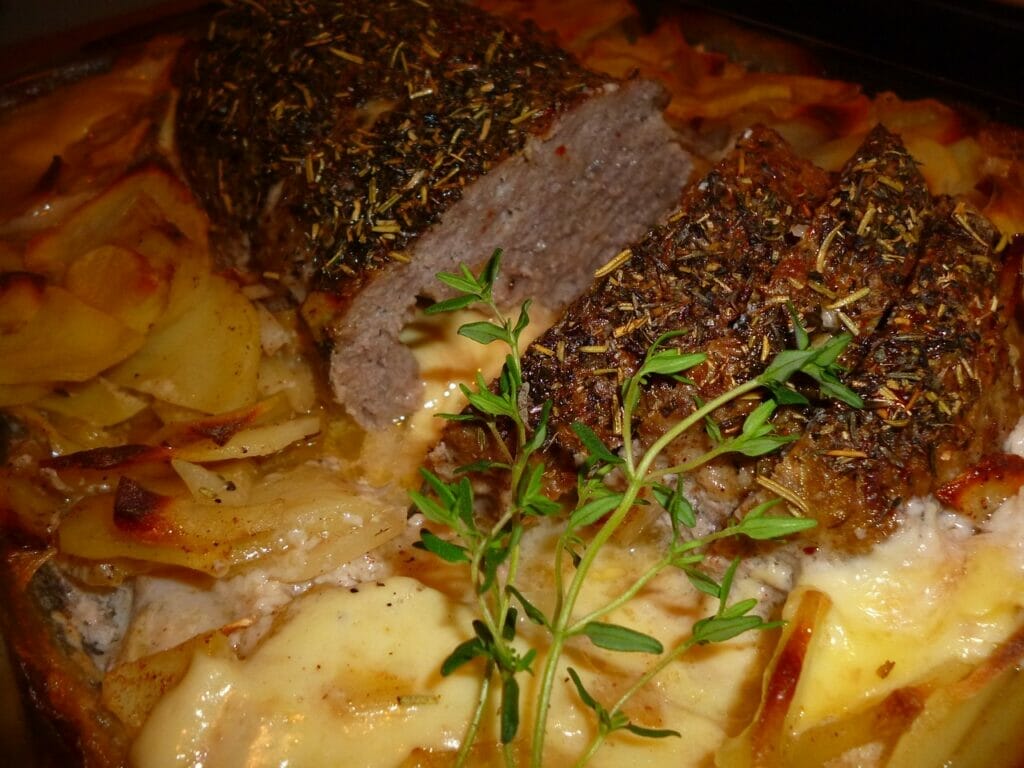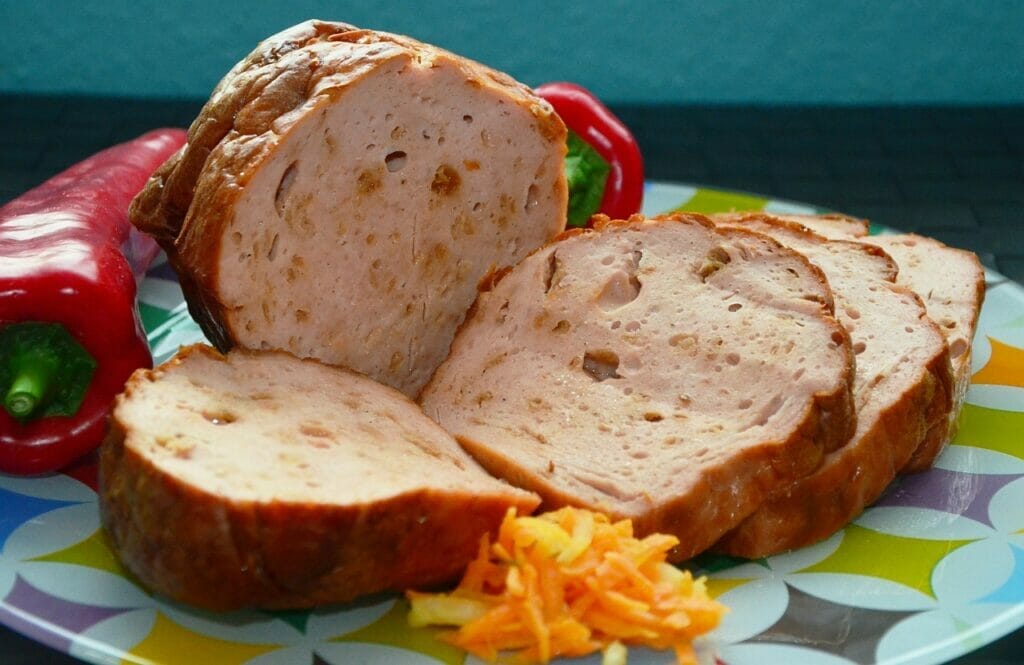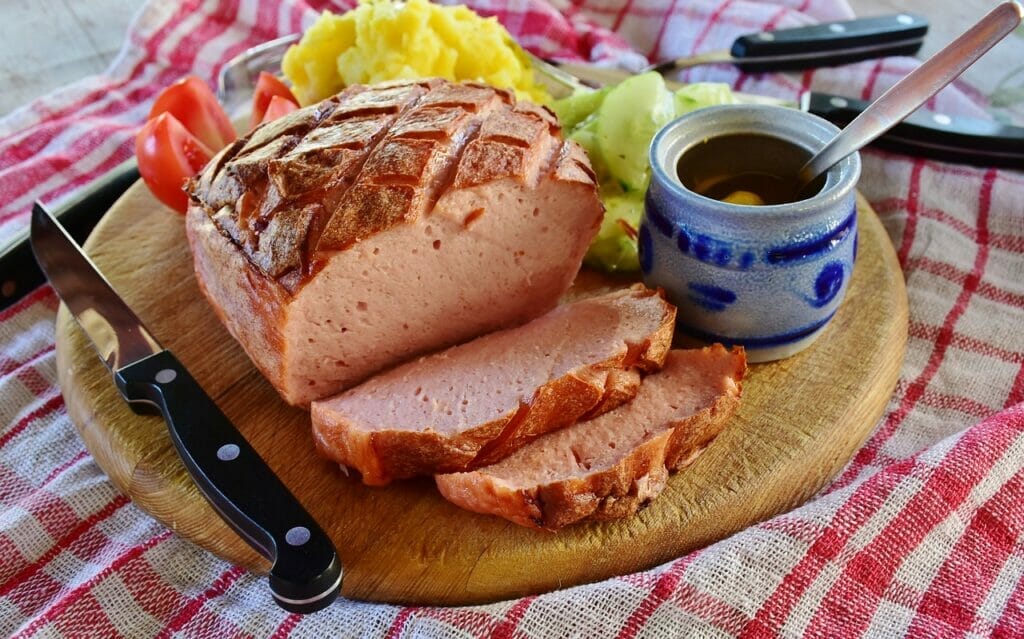As an Amazon Associate, I earn from qualifying purchases. In addition, I participate in several other affiliate programs that allow me to earn while I recommend products I love.
There’s something comforting and delicious about a homemade meatloaf.
Whether you’re a seasoned chef or a novice in the kitchen, cooking meatloaf to perfection can be a bit tricky.
One of the most common concerns is ensuring that the meatloaf is cooked all the way through, not only for taste but also for food safety.
In this guide, we will explore various methods to determine if your meatloaf is done and provide essential tips for achieving that perfectly cooked, moist, and flavorful dish.

Understanding Meatloaf Cooking Time and Temperature
How do you know when meatloaf is done?
Before delving into the techniques for checking meatloaf doneness, it’s crucial to understand the ideal cooking time and temperature.
The key to a moist and safe meatloaf is reaching an internal temperature of 160°F (71°C).
At this temperature, harmful bacteria are destroyed, and the meat is cooked to a safe and juicy consistency.

However, factors such as the type of meat used and the size of the loaf can influence the cooking time.
For instance, beef, pork, turkey, or a combination of meats all have different cooking times.
Additionally, a thick and compact meatloaf will take longer to cook than a thinner, more loosely packed one.
To eliminate any guesswork, it’s always best to use a meat thermometer to ensure accuracy.
Visual Clues for Meatloaf Readiness

Want to know how to tell if meat loaf is done?
While a meat thermometer is the most accurate tool to assess doneness, visual cues can be quite helpful in determining meatloaf readiness.
As your meatloaf bakes, its surface will develop a beautiful golden-brown crust.
This rich color is not only visually appealing but also indicative of a well-cooked exterior.
Additionally, a perfectly cooked meatloaf will slightly shrink away from the sides of the pan, showing that it’s retracting as it loses moisture and cooks.
Another visual cue to look for is rendered juices on top and around the edges of the meatloaf.
These juices are a sign that the fat and juices are being released and the meat is cooking properly.
The Toothpick or Skewer Test
The toothpick or skewer test is a simple yet effective way to check if your meatloaf is done.
About 5 to 10 minutes before the expected cooking time is up, insert a toothpick or skewer into the center of the meatloaf and then remove it.
If it comes out clean, without any raw meat sticking to it, your meatloaf is likely cooked through.
However, if you see any uncooked meat clinging to the toothpick, it needs more time in the oven.
In that case, cover the meatloaf with foil to prevent excessive browning, and continue baking until the toothpick comes out clean.
Internal Temperature Check

Using a meat thermometer is the most reliable and foolproof way to determine if your meatloaf is done.
When the estimated cooking time is close to meatloaf being done, open the oven door slightly and carefully insert the meat thermometer probe into the thickest part of the meatloaf, making sure it doesn’t touch the pan or the thermometer’s base.
Leave it in for a few seconds until the temperature reading stabilizes.
The internal temperature should reach 160°F (71°C) for safe consumption.
Remember that the temperature will continue to rise slightly as the meatloaf rests.
Resting Period Importance

Once your meatloaf reaches the desired internal temperature, resist the temptation to cut into it right away.
Allowing the meatloaf to rest for about 10 minutes after removing it from the oven is essential.
During this resting period, the residual heat will continue to cook the meatloaf slightly, and the juices will redistribute throughout the loaf, making it juicier and more flavorful.
Cutting into the meatloaf too soon can cause the juices to escape, resulting in a drier texture.
Common Mistakes to Avoid

To achieve a perfectly cooked meatloaf, there are a few common mistakes to avoid.
The first is overcooking the meatloaf.
Leaving it in the oven for too long can dry out the meat and result in a tough, unpalatable texture.
Remember that the internal temperature will continue to rise during the resting period, so take it out of the oven a few degrees below the target temperature to avoid overcooking.
Additionally, relying solely on visual cues can be misleading, as the exterior may appear cooked while the interior is still undercooked.
Always use a meat thermometer to ensure accuracy and safety.
Tips for Perfectly Cooked Meatloaf
Now that you understand the techniques for checking meatloaf doneness, here are some tips to help you achieve that perfectly cooked, moist, and flavorful dish:
Choose the right meat-to-fat ratio: The ideal meat-to-fat ratio for meatloaf is around 80% lean meat to 20% fat. This combination ensures a juicy and flavorful result.
Add moisture-enhancing ingredients: To prevent a dry meatloaf, incorporate moisture-enhancing ingredients into your mixture. Diced vegetables like onions, carrots, and celery add both flavor and moisture. Grated cheese, such as cheddar or Parmesan, can also contribute to a moist texture.
Use an oven-safe meat thermometer: Invest in a high-quality oven-safe meat thermometer that can be left in the meatloaf while it cooks. This allows you to monitor the internal temperature without having to open the oven frequently.
